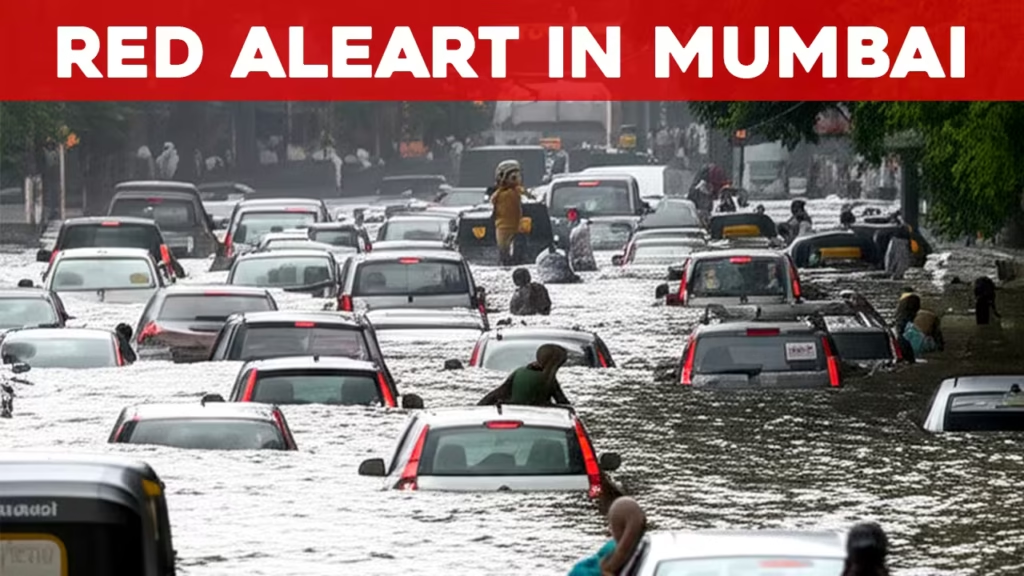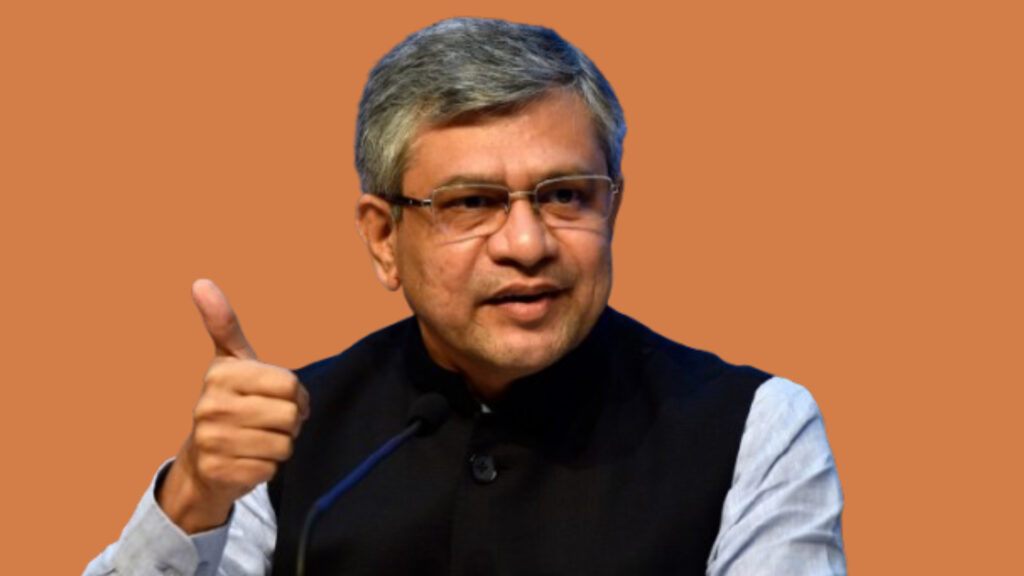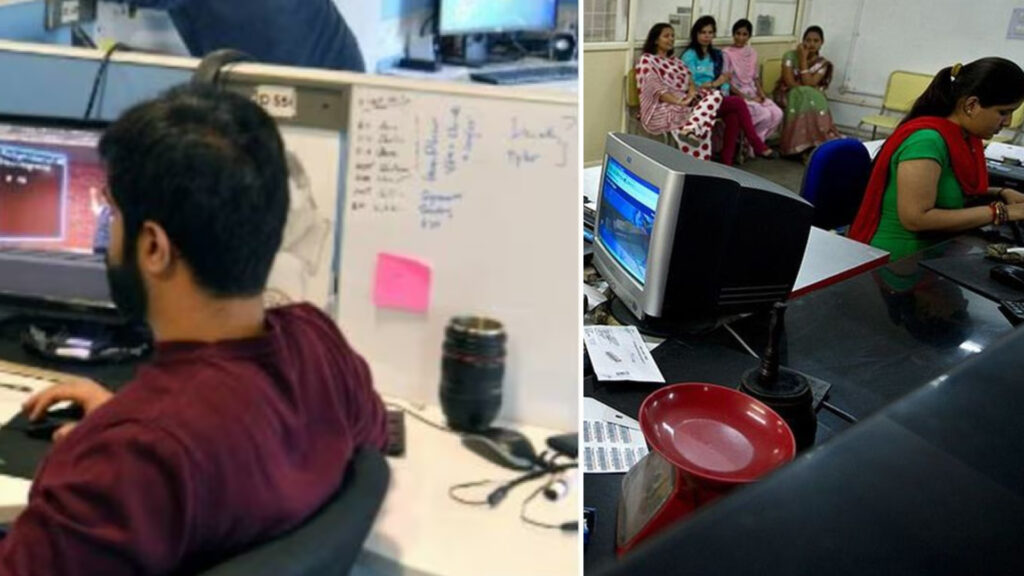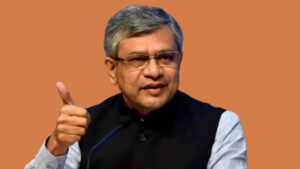Red Alert in Mumbai: A Wake-Up Call Drenched in History, Heartache, and Hard Truths
Red Alert in Mumbai is no longer just a weather notification—it’s a dire call to action. On Monday, the city witnessed its earliest and heaviest monsoon onset in over 75 years, transforming daily life into a struggle for safety. The intense spell of rain dumped over 250 mm in mere 13 hours, paralyzing railways, flooding metro stations, and submerging iconic landmarks like CSMT, Churchgate, and Mantralaya.
But behind the weather update is a story of human impact, political accountability, infrastructure flaws, and the silent resilience of Mumbai’s citizens.
What Triggered the Red Alert in Mumbai?
The India Meteorological Department (IMD) issued a red alert for Mumbai, Thane, and Raigad, warning of extremely heavy rainfall. In less than a day, Nariman Point recorded 252 mm, Colaba logged 135.4 mm, and the BMC headquarters saw 216 mm of rainfall—levels not seen since 1918.
This wasn’t just monsoon; it was nature’s fury compressed into hours, breaking Colaba’s 106-year-old rainfall record.
Where Did Mumbai Break Down ?

When you flood a city built for resilience, you unmask its vulnerabilities. Key breakdowns included:
-
Mumbai Metro Line 3: Suspended between Acharya Atre Chowk and Worli due to water seepage and wall collapse.
-
Central and Harbour Railway Lines: Halted as water rose over 8 inches above track level.
-
Major Roads: Hindmata, JJ Marg, and King Circle turned into rivers.
-
Traffic Diversions: Roads near Rayta Bridge were shut down due to rising Ulhas River levels.
Despite these collapses, Western Railway managed near-normal service, offering a faint silver lining.
World News : Liverpool Van Crash: 27 Injured During Soccer Parade
What’s the Weather Outlook Now?
The temperature sits between 24°C (min) and 31°C (max)—not harsh in isolation, but misleading when paired with soaking humidity and disrupted air circulation. IMD warns of continued rain, lightning, gusty winds, and potential thunderstorms in the next 48–72 hours.
In short: Don’t let the thermometer fool you—conditions remain dangerous.
Red Alert in Mumbai Political Storm: Responsibility or Blame Game?
Maharashtra CM Devendra Fadnavis has held back-to-back reviews with the Disaster Management Cell, ensuring all departments stay on alert. Yet, Aaditya Thackeray (Shiv Sena UBT) and the Congress Party have thrown heavy criticism at the Mahayuti government:
“Despite crores spent, Mumbai is still drowning,” – Thackeray told ANI, alleging a road scam and drainage mismanagement.
Even Deputy CM Eknath Shinde admitted that the early monsoon arrival caught them off guard, though he emphasized pre-monsoon preparations were scheduled till June 10.
Human Cost: A Toll Beyond Statistics
The numbers are grim:
-
4 people killed in lightning strikes.
-
1 died in a ceiling collapse.
-
1 drowned, and
-
3 others lost their lives in separate incidents across Pune.
These are not just headlines; they’re families shattered, lives rewritten, and dreams halted by rainfall that the city wasn’t prepared for.
Watch Video (source FirstPost)
Lessons from the Deluge: What Mumbai Must Learn
Every red alert is also a red flag—warning us about climate unpredictability, urban planning failures, and the cost of negligence.
Here’s what must change:
-
Drainage Overhaul: Mumbai’s century-old system is obsolete. It needs tech-driven, decentralized alternatives.
-
Transparent Spending: Budget allocations for monsoon prep must be made public and audit-ready.
-
Disaster Preparedness Education: Community-level drills and awareness programs can save lives.
-
Smart Urban Planning: Future metro lines and civic infrastructure must be designed to absorb climate shocks.
Red Alert in Mumbai What Can You Do?
While governments debate and rain gods rage, citizens can:
-
Avoid unnecessary travel over the next 48 hours.
-
Use real-time BMC and IMD apps for alerts.
-
Report waterlogging to civic helplines.
-
Support local community aid efforts for those affected.
Mumbai, Don’t Drown in Silence
Mumbai is a city of dreams, but dreams need roots to survive the flood. The Red Alert in Mumbai isn’t just a meteorological phenomenon—it’s a civic, political, and human crisis. Let this not be just another chapter in a recurring monsoon tragedy, but a turning point for planning, accountability, and empathy.
Because if there’s one truth this city knows well—when the tide rises, so do its people.
read more : A monsoon in May: Why have the rains arrived early in India?













